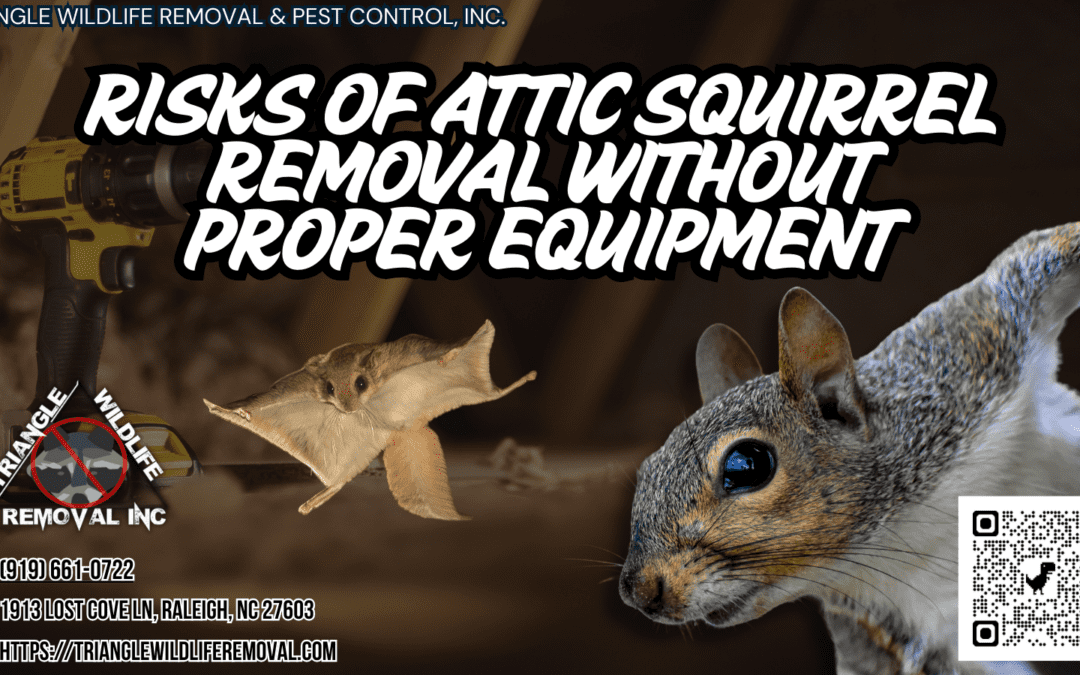When attempting to remove squirrels from your attic without the proper equipment, the risks can be significant. From physical injuries resulting from squirrel attacks to potential exposure to disease-carrying fleas, the dangers are not to be underestimated. Moreover, the inhalation of harmful attic dust and the risk of electrical accidents pose additional threats. The consequences of improper squirrel removal techniques extend beyond the immediate task at hand, potentially exacerbating the infestation issue. These risks highlight the importance of approaching attic squirrel removal with caution and the right tools.
Key Takeaways
- Injuries from squirrel attacks and diseases from fleas pose significant health risks.
- Respiratory issues can arise from inhaling contaminated attic dust during removal.
- Electrical hazards from chewed wires increase the danger without proper precautions.
- Property damage and infestation risks escalate when removing squirrels without the right equipment.
Physical Injuries From Squirrel Attacks
Injuries resulting from squirrel attacks can pose serious risks during attic squirrel removal. Squirrel bites can lead to painful wounds and potential infections if not properly treated. When attempting to remove squirrels from attics, it is essential to take preventive measures to avoid getting bitten. One of the key prevention techniques is to wear thick gloves and long-sleeved clothing to protect your hands and arms from squirrel bites. Additionally, using a tool such as a trap or a snare can help safely capture squirrels without direct contact, reducing the risk of bites. It is crucial to approach squirrel removal with caution and respect for the animals to minimize the chances of aggression and potential injuries. By implementing these prevention techniques and approaching the situation calmly, individuals can decrease the likelihood of sustaining squirrel bites during attic squirrel removal, ensuring a safer and more successful removal process.
Exposure to Disease-Carrying Fleas
Exposure to disease-carrying fleas poses a significant risk during attic squirrel removal procedures. Squirrels can carry fleas that may transmit diseases to humans, such as typhus and plague. When attempting to remove squirrels from attics without proper equipment and precautions, individuals are at risk of being bitten by these infected fleas, leading to potential health hazards.
To prevent flea exposure during attic squirrel removal, it is crucial to take preventive measures. Wearing protective clothing, including gloves and long-sleeved shirts, can help reduce the chances of flea bites. Additionally, using flea repellents and regularly checking for fleas on clothing and skin can aid in flea prevention.
Failure to address the risk of disease-carrying fleas during attic squirrel removal can result in serious health consequences. Therefore, it is essential to prioritize flea prevention strategies to safeguard against potential flea-borne illnesses.
Inhalation of Harmful Attic Dust
During attic squirrel removal procedures, individuals face the risk of inhaling harmful dust particles that can pose health hazards if proper precautions are not taken. Dust in attics can contain a variety of contaminants, including droppings, urine, mold spores, and debris, which when disturbed during the removal process, can become airborne. Inhaling this contaminated dust can lead to respiratory issues and other health problems. To mitigate these risks, it is essential to follow safety precautions when conducting attic squirrel removal.
| Safety Precautions | Description |
|---|---|
| Wear Protective Gear | Use gloves, masks, and goggles to prevent direct contact with dust and inhalation of particles. |
| Ventilation | Ensure proper airflow by opening windows or using fans to reduce the concentration of dust in the air. |
| Wet Cleaning Methods | Dampen dust before cleaning to minimize the dispersal of particles and reduce inhalation risks. |
| Professional Help | Consider hiring professionals equipped with the necessary gear and expertise for safe removal. |
Risk of Electrical Accidents
When removing squirrels from attics, the risk of encountering electrical accidents necessitates cautious handling and awareness of potential hazards. Electrical hazards are a significant concern during squirrel removal due to the rodents’ tendency to chew on wires and insulation. Squirrels may inadvertently expose live wires, increasing the risk of electrical fires, shocks, or power outages. To mitigate these risks, safety precautions should be followed diligently.
Before starting any removal procedures, it is crucial to turn off the power supply to the attic to prevent accidental contact with live wires. Additionally, wearing insulated gloves and using insulated tools can provide an extra layer of protection. It is advisable to have a professional electrician inspect the attic for any damaged wires or electrical issues before initiating squirrel removal. In case of any visible damage or exposed wires, refrain from handling the situation independently and seek professional assistance promptly.
Aggravating Squirrel Infestation
Squirrel infestation in attics can exacerbate structural damage and pose health risks to occupants. When squirrels take up residence in your attic, they can cause significant damage to the space. From gnawing on wires to tearing insulation, the effects of their presence can be costly and hazardous. Addressing squirrel infestations promptly is crucial to prevent further harm.
To highlight the potential risks of a squirrel infestation, consider the following table:
| Issue | Description | Solution |
|---|---|---|
| Squirrel Damage | Squirrels can chew on electrical wires, wooden beams, and insulation, leading to fire hazards and leaks. | Hire professionals for safe removal and repair damaged structures. |
| Health Concerns | Squirrel droppings and urine can spread diseases and attract other pests. | Clean and sanitize the attic thoroughly after removing the squirrels. |
| Attic Repairs | Repairs may be necessary to fix chewed wires, torn insulation, and any other damage caused by squirrels. | Conduct a thorough inspection and enlist the help of experienced contractors. |
Addressing squirrel infestations promptly with proper equipment and expertise can mitigate these risks and ensure a safe living environment.

